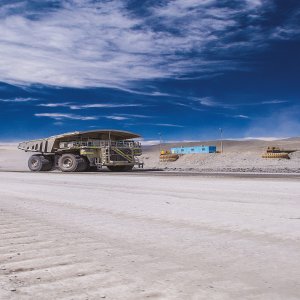Digital Innovation: the Next Step in Keeping Canaries out

STORY INLINE POST
Process automation and lean manufacturing practices can optimize mining operations but Bruno Juanes, Chief Innovation Officer at Deloitte Consulting Group, says the next step is innovating and bringing Industry 4.0 practices down the pits to increase ROI. “Mining companies in Mexico are starting to realize innovation is not the circumstantial answer to specific problems but a long-term, structural solution,” he says.
As an international professional services firm, Deloitte Consulting Group helps companies in areas ranging from strategy definition and operational improvement to process outsourcing. “We can support our mining clients locally in the main mining-intensive areas in Mexico and connect them with our international network of mining experts,” Juanes says. The company has identified several areas of opportunity to help mining companies operating in Mexico.
He points out that mining operations are dangerous and complex, which makes data communication a critical topic. “We no longer bring canaries down the tunnels, but mining has not advanced that much either,” he says, adding that several technologies have already been developed to improve mines’ safety conditions and control, but they are not yet widespread. He highlights smart jackets that monitor miners’ location and vital signs and sensors that detect gas leaks as examples of innovative technologies that can improve mine security.
Juanes also says that using drones to monitor stock piles and installing sensors across a mining production chain from the mineral production point to the mineral delivery point can enable companies to optimize costs. “The data that sensors generate can be used to create a digital twin of the mine where assets and equipment can be monitored in real time from a control room,” he says. “Mathematical models can be applied to this information to predict and prevent failure conditions.”
The potential for technological disruption extends to blockchains used for cryptocurrencies that can be used for material tracing from the mine’s ore to the finished product. “Any transaction can be supported by a secure web to ensure it will occur,” Juanes says. “Supply chains supported by blockchain will replace a substantial amount of infrastructure and human activity.” Even transactional processes surrounding mining activities offer efficiency that is still to be captured through innovative technologies. “Areas such as procurement, accounts payable and human resources can already be automated.”
Innovation has started to permeate Mexico’s economy to the point that WEF’s Global Competitiveness Report 2017-2018 ranked Mexico 70th of 137 countries in the Capacity to Innovate index. However, one of the issues that innovation faces in the country is that it has taken place unevenly among industries. “Mexico’s mining and oil and gas sectors must realize innovation is the only way to exit an adverse situation with unfavorable macroeconomic parameters,” he says.
Juanes says that innovation must take place at three levels. The core level means a company is innovative in its comfort zone. “It entails focusing on cost-effectiveness, social responsibility and environmental awareness while sticking to the markets and products where a company is comfortable,” he says. The second level is adjacent innovation, which takes place when a company attacks clients, markets and products it is not familiar with and develops alternatives to existing products. “For mining this can mean developing special finishes for materials to cover specific needs or integrating vertically,” he says. The third type is transformational innovation. This happens “as companies develop abilities they lack but not necessarily need,” he adds.
























